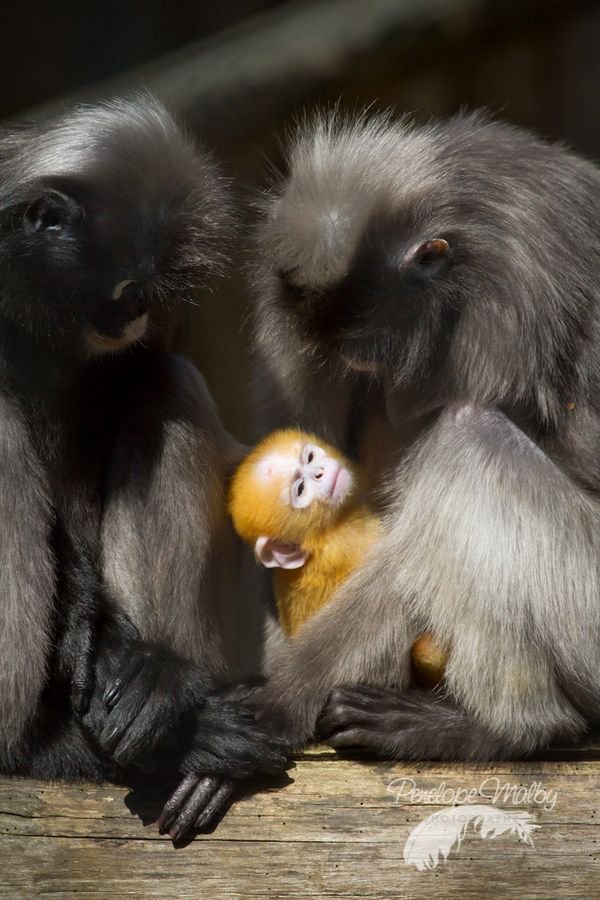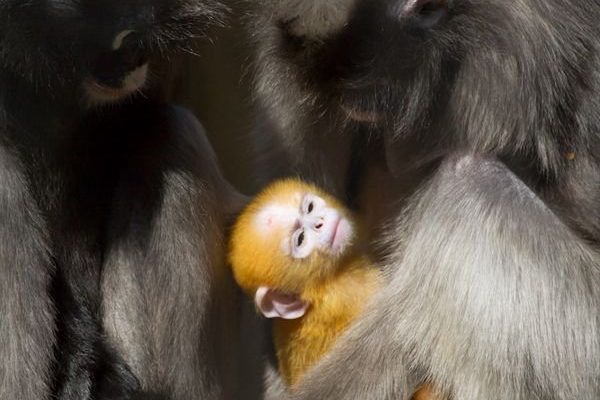
Langurs are mostly known for their impressive social structures and behaviors, which make their parenting methods even more fascinating. Picture a close-knit community where everyone plays a role—moms, dads, and even older siblings. In this article, we’ll dive deep into the world of langurs and explore how they raise their young in the wild, sharing some captivating stories and insights along the way.
Understanding Langur Social Structure
Langurs are social animals that thrive in groups, which are often called troops. These troops can consist of anywhere from a few individuals to over twenty members. You might be wondering why this matters for parenting. Well, it turns out that living in a troop creates a close environment where young langurs benefit from constant interaction and support from not just their parents, but other members of the troop as well.
In a single troop, there are usually several females and one or more males. The females often form strong bonds with one another, which means they can share responsibilities when it comes to caring for the young. Allomothering is a fascinating practice where other females take the time to help care for and even babysit the little ones. It’s like having a big family where everyone pitches in to help raise the youngsters.
This communal care significantly benefits the young langurs. They learn valuable social skills from a variety of caregivers, not just their moms. They get to interact with different personalities, which prepares them for life in the bigger world as they grow up.
Birth and Early Care of Langur Infants
When a langur infant is born, it’s quite a celebration! The baby is usually very tiny and helpless, relying entirely on its mother for care. In the first few weeks, the mother is incredibly attentive. She keeps her baby close, often carrying it on her belly or in her arms. This not only protects the infant but also strengthens their bond through physical closeness.
The first few months are crucial for a langur’s development. During this time, the mother’s primary job is to keep the baby safe and fed. Langur infants nurse frequently, almost every hour or so. This constant feeding helps them grow quickly and gain the strength they need to start exploring their surroundings. You can imagine how a mother is always on alert, like a dedicated night-shift worker—ready to respond whenever the baby needs anything.
As the baby grows, it begins to explore its environment. Here’s the thing: langurs are naturally curious creatures. You might see a young langur trying to climb a tree or play with a leaf. Their mothers encourage this play while staying close by, ensuring they’re safe. This exploration is critical for their learning; it’s during these playful moments that young langurs practice skills they will need for life, like climbing and socializing.
Langur Parenting Styles
Langur mothers have different parenting styles that can vary between individuals. Some are more nurturing and protective, while others might be a bit more relaxed. This diversity keeps things interesting in the troop! A more relaxed mother might allow her young one to venture out farther, encouraging independence. On the flip side, a protective mother prefers to keep her baby within sight at all times.
Interestingly, langurs also engage in a behavior called “social grooming.” This is when mothers and their babies spend time cleaning each other’s fur. It’s not just about hygiene; grooming strengthens their bond and calms the baby. Imagine it as a warm hug or a gentle pat on the back, making the little one feel secure and loved.
Older siblings also play a vital role in parenting. They often mimic the mothers and can be seen holding, grooming, or even playing with their younger siblings. This practice is beneficial for the family unit, as it teaches the young ones social cues and helps them learn through observation. It’s almost like watching the older kids at a playground showing the younger ones how to navigate the swings or slide.
The Importance of Play in Raising Young Langurs
Playtime is a big deal in the langur world! Young langurs engage in all sorts of playful activities, from chasing each other to swinging from tree branches. Play isn’t just for fun; it’s a vital part of their learning. Through play, they develop physical skills, understand social dynamics, and even learn about boundaries—what’s acceptable and what’s not.
You might notice that the mothers often encourage play, allowing their young ones to explore and interact with others. This not only helps their babies grow stronger but also builds confidence. Just like how kids learn to interact with peers on a playground, langur infants learn the skills they’ll need to thrive in their communities.
Seeing a group of young langurs at play is like witnessing a lively dance. They jump, tumble, and wrestle, often with loud calls of excitement. And the mothers? They watch with a sense of pride, occasionally joining in the fun or stepping in when things get too rowdy.
How Langurs Teach Survival Skills
As the young langurs grow, their mothers take the time to teach them essential survival skills that will help them in the wild. For instance, langurs eat a diverse diet that includes leaves, fruits, and flowers. Mothers often share their food with their babies, showing them what’s safe to eat. This kind of teaching is crucial because being a forager is all about knowing which plants are nutritious and which are harmful.
You might see a mother demonstrating how to pick the best leaves or how to navigate the trees to reach delicious fruits. It’s a hands-on learning experience—literally! The young ones watch closely, mimicking their mothers as they learn to handle food and search for their own meals.
Another essential survival skill is recognizing potential threats. Langurs are prey for various predators, so being aware of their surroundings is vital. Mothers often teach their babies how to identify warnings from troop members and react appropriately. For instance, if one langur spots a predator, it sends out a specific call. Young langurs learn to respond to these calls by seeking safety in the trees, just like kids learning to look both ways before crossing the street.
Challenges in Raising Young Langurs
Despite their strong social structures and parenting skills, raising young langurs isn’t without its challenges. Environmental changes, habitat loss, and threats from predators make survival tough in the wild. Langurs face increasing pressure as humans encroach on their habitats, leading to reduced food sources and safe spaces for raising their young.
In addition, competition within the troop can create tensions. Sometimes, a new male may take over a troop, which can lead to the *infanticide* of young monkeys, as the new male might kill the offspring to bring the females back into estrus. This harsh reality shows how survival can be a tough battle, even in a tightly-knit community.
Mothers often have to be vigilant and protective, teaching their young to be cautious and aware of their surroundings. While this may sound stressful, it’s all part of the natural process. These experiences shape the young langurs into strong, capable adults who can face the world outside their troop.
Watching langurs raise their young in the wild gives us a beautiful glimpse into the bonds formed within their communities. Their parenting, filled with love, play, and teaching moments, closely resembles how humans nurture their kids. From allomothering to navigating challenges, langurs show us the importance of community in parenting.
Their ability to adapt, learn, and grow in the face of adversity serves as a reminder of the resilience found in nature. So, the next time you see a langur, take a moment to appreciate the complex family dynamics at play. In the wild, every moment counts, and langurs make sure that their little ones are ready to thrive in a big, sometimes challenging world.

